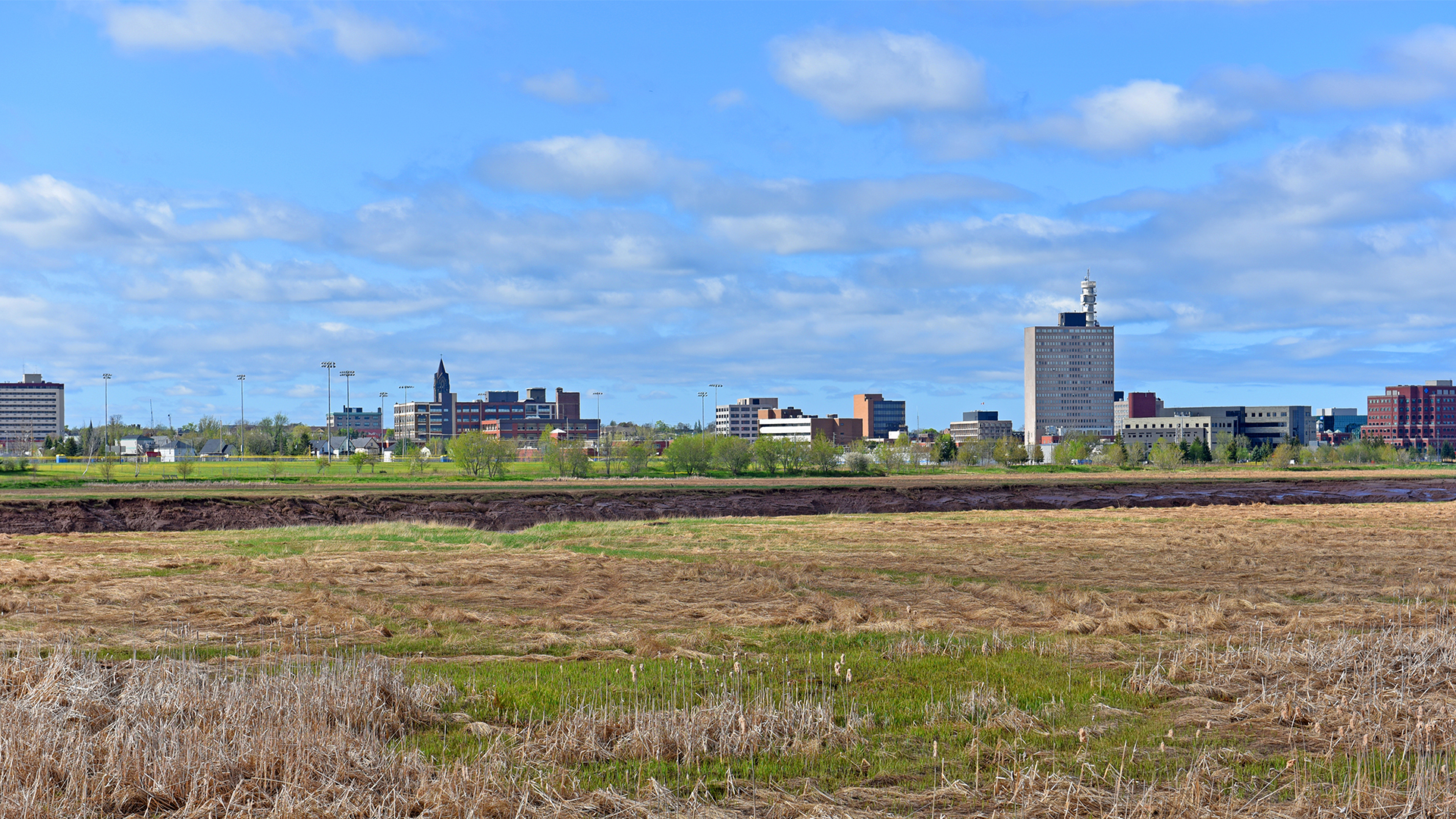
In Canada, the forced shutdown of many economic activities throughout 2020 to limit the spread of COVID-19 has affected the economies of large cities with 100,000 inhabitants or more, and smaller urban centres.
Since the implementation of the first shutdown measures in March 2020, the impacts on employment have been immediate but different within large and small urban centres.
The largest cities lost around 17 per cent of the 12.5 million jobs recorded in January 2020, of which more than three quarters were in five industries, including accommodation and food services (-3.9 per cent of total jobs), the retail trade (-3.5 per cent), manufacturing (-1.8 per cent), health care and assistance (-1.6 per cent), and construction (-1.4 per cent). See figure 1.
At the same time, smaller urban centres lost around 14 per cent of the 3.4 million jobs. These jobs (figure 2) were mainly in the wholesale trade (-3.5 per cent), accommodation and food services (- 2.6 per cent), construction (-1.9 per cent), information, culture and recreation (-1.4 per cent), transportation and warehousing (-1.1 per cent), non-profits and maintenance (one per cent), and manufacturing (0.8 per cent).
This difference can be explained by the fact that both large and small urban centres haven’t had the same vulnerability factors when facing the pandemic crisis.
Different vulnerability factors across the urban spectrum
On the one hand, the largest cities at the upper end of the urban spectrum are fueled by agglomeration economies; that is, they experience the multiple economic advantages of spatial proximity, density, interaction and diversity of economic agents. As a result, their economy has been made vulnerable by the temporary closure of their most attractive places for socioeconomic interactions (shops, for example, and cultural and leisure spaces), and by lockdown measures that emptied their most productive places (central business districts, industrial districts and institutional buildings, for example).
On the other hand, many small urban centres, which are less dense and less populous, depend on major national and international contractors as well as on export activities, including tourism. As a result, their economy has been made vulnerable by the temporary or partial closure of national and regional borders, and by the subsequent storage and transport constraints that have affected the access to and mobility of their goods.
Different resilience factors across the urban spectrum
Large cities at the upper end of the urban spectrum and small urban centres also have different resilience factors.
The largest cities owe their economic resilience – their ability to quickly overcome the disruptions of a crisis such as COVID-19 – to a dominant digitalized economy where many activities were able to continue remotely. Three months after the first wave of COVID-19 in March, the sectors of finance, public administration, information and communication, and the business development services have recovered or even exceeded the employment numbers they had before the pandemic.
In the remaining urban centres, however, the factors of resilience are more heterogeneous, or diverse. They are based on the presence of a niche expertise (food industry, for example), the ability to supply large cities with essential products (food, and pharmaceutical products, for example) and import substitution products (furniture manufacturing, for example) as well as their connectivity level to local and regional transportation networks. Three months after the first wave of COVID-19, the sectors of accommodation and food services; health care and social assistance; manufacturing; construction; forestry, fishing and mining; and agriculture had regained or exceeded their pre-crisis job numbers.
These differences between both large and small urban centres call for economic recovery plans with a mix of policies that are both geographically neutral and place-based. These two approaches are both necessary and complementary, and neither can solve the problems alone.
Geographically neutral approaches are no longer sufficient
Geographically neutral approaches refer to policies and strategies that target key industries according to their expected contribution to economic growth (advanced manufacturing, clean tech, and aerospace industry, for instance), and as such, tend to favour large cities. These approaches in Canada between the 1950s and the 1990s have been successful in narrowing the gaps between the upper end and the lower end of the urban spectrum. As a result, these approaches have become economic recipes whose relevance is taken for granted.
However, for at least two decades now, accelerating tertiarization of the economy (the shift from a material-based economy to a service-based economy), the hyper-globalization of the production of goods and services, and the hyper-digitalization of the economy have weakened the collaboration between large cities and small urban centres, which had helped the economic prosperity of Western countries just a few decades ago. In Canada, the gap between both large and small urban centres has widened not only in terms of income, but also in terms of population growth and employment, as shown in figures 3 and 4. This trend signals that geographically neutral approaches are no longer sufficient to prevent regional divergence.
Place-based policies should avoid “catching up” and “quota” principles
The economic divergence observed between large cities and smaller urban centres also indicates that some place-based policies put in place in the 1990s have not fully produced what was promised.
Place-based approaches consist of contextualizing policy interventions according to the needs and the ambitions of each territory, as well as the speed at which they are able to evolve. They should not consist of adopting “catching up” measures by attempting to reproduce the large cities’ economic recipes in small urban centres, such as attracting large multinational firms. Nor should they consist of adopting “quotas,” for example, based on demographic weight, where small subsidies are granted “equitably” to all communities regardless of their economic perspective.
Instead, truly place-based approaches consist of adapting strategies and programs to the needs, means and ambitions specific to each region, to unleash their innovative potential.
Connecting workers to opportunities and opportunities to workers
Place-based policy matters, but geographically neutral policies are also necessary for a truly inclusive economy. As pointed out in a report by the Brookings Institution, “Countering the geography of discontent: Strategies for left-behind places,” each approach is valid for certain populations in particular places at particular times.
On the one hand, inclusive economic recovery plans should first and foremost allow workers to connect to opportunities. National (or provincial) strategies targeting clean tech, advanced manufacturing and digital industries, to name a few, can help attract workers to opportunities where large cities have a certain head start. However, to be more effective, such national (or provincial) strategies need to go hand in hand with social measures, such as making large cities more affordable for newcomers and accelerating credentials recognition for immigrants. In addition, investing in teleworking and public transportation is crucial to allow individuals who wish to remain in their smaller communities to benefit from the opportunities offered by the large cities.
On the other hand, to be more inclusive, economic recovery plans should also connect opportunities to workers wherever they are, and ensure that place-based policies allow for such connection. For example, distinct programs for businesses in the largest cities and in the smaller urban centres should be expected when supporting innovation and R&D. As advocated by the Canada Foundation for Innovation, large cities will then be able to benefit from support that truly responds to their challenges and matches their international ambition. The remaining cities will then be able to truly stand out, promote business models that are different from what is commonly advocated in large cities, attract businesses and workers, and fully realize their innovative potential.














